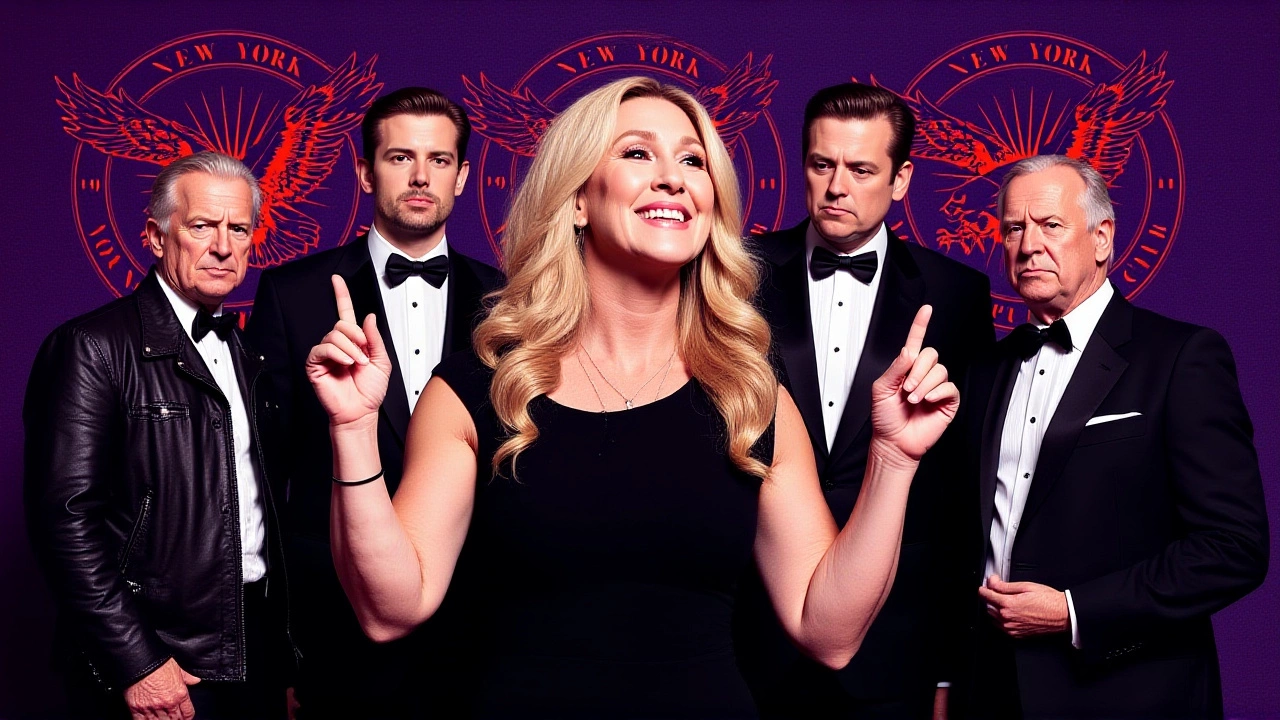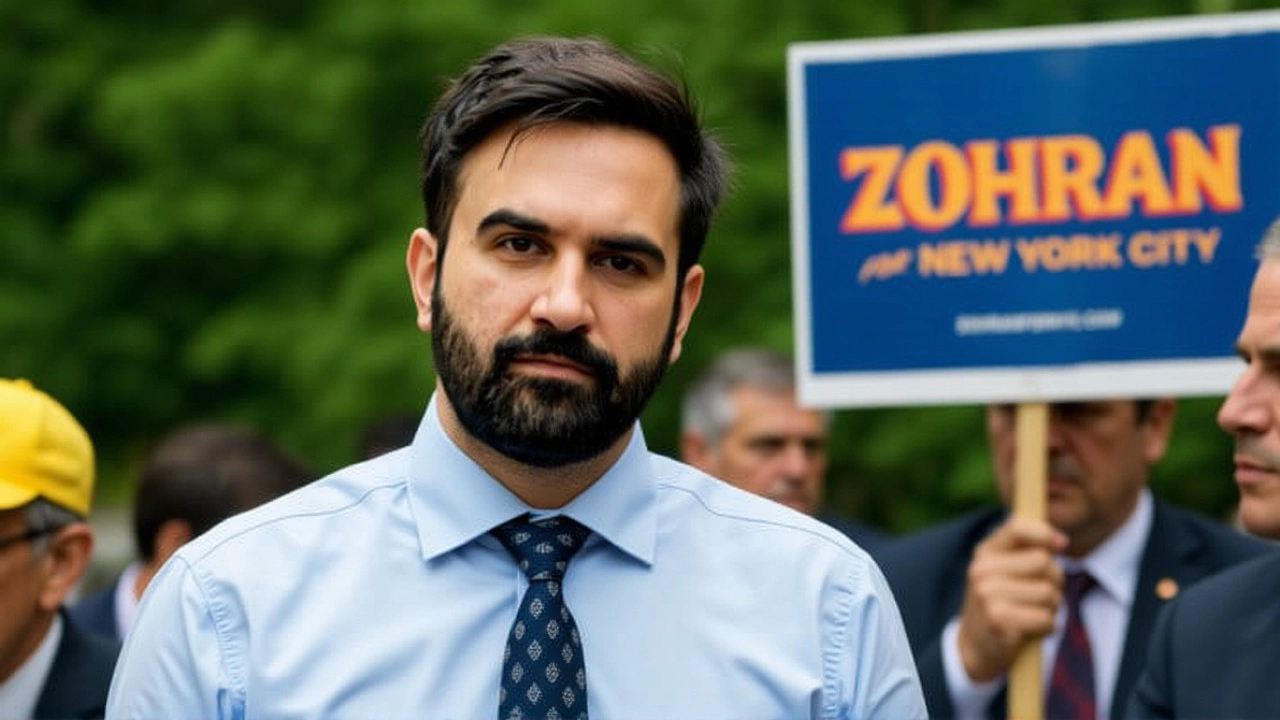In a dramatic twist to the NYC mayoral race, Zohran Kwame Mamdani, a 33‑year‑old democratic socialist serving as a New York State Assemblymember for Queens, surged to a 46% lead among likely voters, according to a Quinnipiac University poll released on October 15, 2025.
The surge comes after incumbent Eric Leroy Adams, 64, formally withdrew from the race on September 28, 2025, ending a campaign that had been mired in a federal indictment that was later dismissed when Donald J. Trump took office. Former Governor Andrew Mark Cuomo, 67, now trails with 33% support, while perennial Republican Curtis Sliwa, 69, holds steady at 15%.
Background: A Turbulent Race Takes Shape
When Adams first won the mayoralty in 2021, he promised to revamp policing and tackle housing affordability. His tenure, however, was shadowed by a September 2024 indictment on corruption charges related to alleged misuse of campaign funds. The Department of Justice dropped those charges in January 2025 after President Trump’s inauguration, a development that reignited Adams’ political ambitions.
Instead of running as a Democrat, Adams launched an independent bid for the June 24, 2025 Democratic primary, only to pull out two weeks before the primary, citing “personal considerations.” His exit cleared the field for a three‑way general‑election contest that, for the first time since 1965, features no incumbent major‑party candidate.
Poll Numbers: Mamdani's Double‑Digit Lead
The Quinnipiac poll, conducted between October 8 and 13 with 1,247 likely voters, shows Mamdani up 13 points over Cuomo and 31 points ahead of Sliwa. The margin of error is ±2.8 points. Mary Snow, Poll Assistant Director at Quinnipiac University, explained, “Andrew Cuomo picked up the bulk of Adams' supporters cutting into Zohran Mamdani's lead, but Mamdani's frontrunner status by double digits stays intact.”
Compared with the earlier September 10 poll—where Mamdani held 45%, Cuomo 23%, Sliwa 15%, and Adams 12%—the numbers illustrate a significant realignment of the electorate after Adams’ withdrawal.
Candidates' Profiles and Campaign Dynamics
Besides the three front‑runners, the race once featured independent hopeful Jim Walden, a former U.S. Attorney who suspended his campaign on September 5, clearing a path for Cuomo’s resurgence.
Mamdani runs on a platform of universal rent control, green infrastructure, and a “people‑first” policing model. He has leveraged his youth and progressive credentials to dominate among registered Democrats (60% support), Asian American voters (67%), and residents under 35 (62%).
Cuomo, despite his legacy as a two‑term governor, is banking on his name‑recognition and a coalition of Jewish voters (60% support) and former Adams backers. His campaign, described as an “old‑school inevitability,” is funded by a coalition of “city power brokers” and boasts the highest fundraising total of $12.9 million.
Sliwa, founder of the Guardian Angels, continues his long‑standing bid for mayor, appealing largely to registered Republicans (54% support) and older, more conservative precincts. His message focuses on public safety and tax cuts.

Fundraising, Demographics, and Issue Stances
- Mamdani raised $8.42 million, with a notable surge from small‑donor contributions across Queens and Brooklyn.
- Cuomo’s war chest sits at $12.89 million, largely sourced from real‑estate developers and labor unions.
- Sliwa reported $1.25 million, reflecting his modest donor base.
- The New York Housing Conference’s 2025 Mayoral Candidate Housing Platform Tracker notes Mamdani’s push for universal rent control, while Cuomo favors increased market‑rate development to boost supply.
The demographic breakdown underscores a city split along age, ethnicity, and religious lines. Mamdani’s strongest support among non‑religious voters (69%) points to a secular, progressive coalition, whereas Cuomo’s appeal to Jewish voters reflects targeted outreach in Brooklyn and the Bronx.
What Comes Next: Debate and Election Outlook
A televised debate is set for Thursday, October 17, 2025, at 7 PM Eastern Time in The New School’s Theresa Lang Community and Student Center, Manhattan. The debate will be the first live face‑to‑face among the remaining contenders and is expected to sharpen contrasts on public safety, housing, and the city’s fiscal outlook.
The general election is scheduled for Tuesday, November 4, 2025, as confirmed by the New York City Board of Elections. Voter‑turnout projections remain high, given the historic nature of the race and the lingering shadow of Adams’ legal saga.
Analysts caution that late‑stage shifts are possible, especially if new revelations emerge about any candidate’s finances or policy positions. Still, with Mamdani maintaining a double‑digit cushion, the narrative appears to favor a progressive victory—something the city hasn’t seen since the early 1990s.

Key Facts
- Poll date: October 15 2025 (Quinnipiac University)
- Leader: Zohran Kwame Mamdani – 46% support
- Second place: Andrew Mark Cuomo – 33%
- Third place: Curtis Sliwa – 15%
- Election day: November 4 2025
Frequently Asked Questions
How does Mamdani’s lead affect progressive policies in NYC?
Mamdani’s double‑digit lead gives him leverage to push universal rent control and expanded green infrastructure. If elected, his administration would likely prioritize zoning reforms and increased funding for affordable‑housing projects, shifting the city’s policy balance toward progressive initiatives.
What impact did Eric Adams’ withdrawal have on the poll numbers?
Adams’ exit forced his base—primarily moderate Democrats and some independents—to choose between Mamdani and Cuomo. Polls show Cuomo captured much of that segment, narrowing Mamdani’s margin but not erasing his lead, illustrating the fluidity of voter allegiance in the race.
Which demographics are most likely to decide the election?
Young voters (18‑34) and Asian Americans heavily favor Mamdani, while Jewish voters lean toward Cuomo. Turnout among these groups, especially in Queens and Brooklyn, will be pivotal. Republican turnout, historically low city‑wide, will determine Sliwa’s ability to influence the final outcome.
When and where is the next major event in the campaign?
The three remaining candidates will face off in a live debate on October 17, 2025, at 7 PM Eastern Time at The New School’s Theresa Lang Community and Student Center in Manhattan. The debate is expected to be a key moment for voters to assess each candidate’s stance on public safety and housing.
What are the financial advantages of each candidate?
Cuomo leads in fundraising with $12.9 million, largely from real‑estate interests. Mamdani trails with $8.4 million, driven by grassroots donors, while Sliwa has raised $1.25 million, reflecting his limited donor network. The financial gap could affect campaign reach, especially in the final weeks before the November election.
